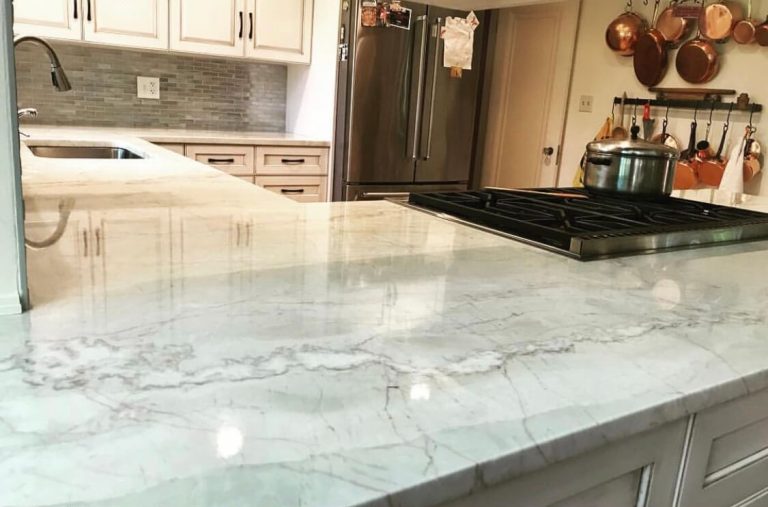Natural stone surfaces are prized for their elegance and durability, but they are not immune to damage. Scratches, stains, and chips can mar their beauty, leaving homeowners searching for effective solutions. This guide offers practical advice to address these common issues while preserving the timeless appeal of your stone.
Key Points
- Address scratches with polishing compounds or diamond pads.
- Remove stains using poultices tailored to the specific discoloration.
- Repair chips with epoxy resin for seamless results.
- Seal surfaces to protect them from future damage.
- Practice proper cleaning and maintenance to extend longevity.
Common Restoration Issues: Scratches, Stains, and Chips
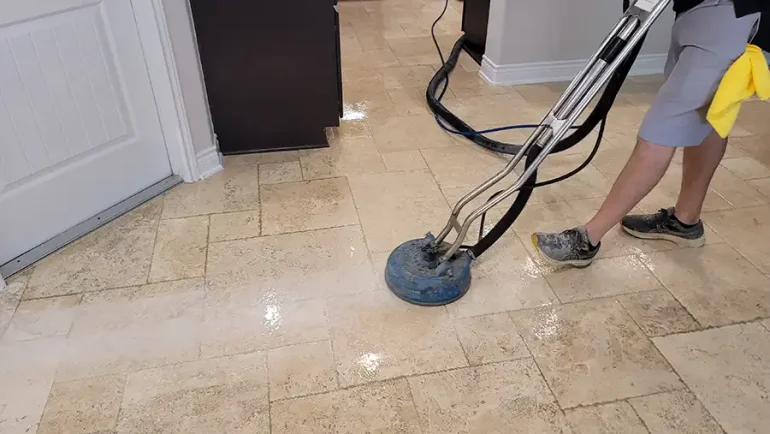
Even with the utmost care, natural surfaces can show signs of wear. Addressing scratches, stains, and chips promptly is key to restoring their charm.
When dealing with scratches, you may notice fine lines marring the surface’s finish. Light scratches can often be polished out using a professional-grade polishing compound or diamond polishing pads. However, deeper scratches might require expert intervention.
For stains, the first step is understanding the type of discoloration. Organic stains from food or drink require a different approach than oil-based or rust stains. A poultice— a mixture of a cleaning agent and absorbent material—works well for lifting discoloration from porous stone. Always test a small area before treating the entire stain.
Chips, although frustrating, can be fixed with the right tools. Epoxy resin, color-matched to your surface, creates a smooth and virtually invisible repair. Apply the resin carefully, then sand and polish once cured for a flawless finish.
Why Sealing Is Essential for Long-Term Protection
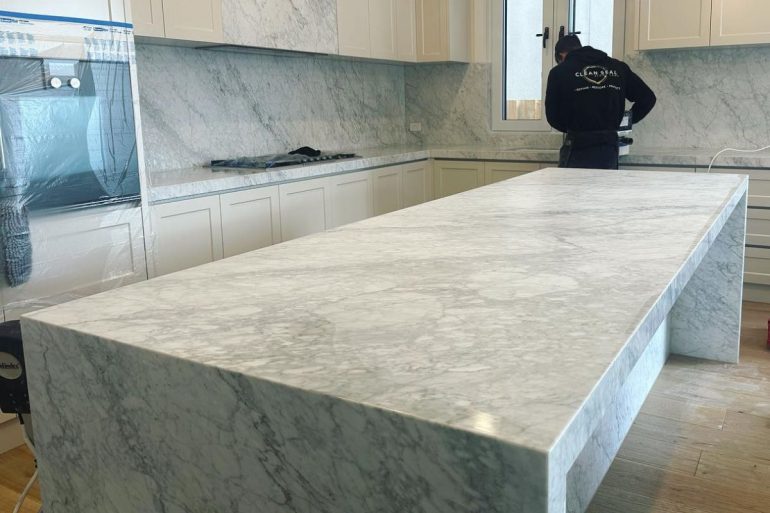
Sealing enhances the durability and appearance of natural stone. Surfaces such as countertops are naturally porous, meaning they absorb liquids that can lead to staining. Applying a quality sealant reduces this absorption and protects against discoloration and etching caused by acidic substances.
For a professional touch, consider expert marble restoration and sealing services. Trained professionals use advanced techniques to remove existing damage, restore the stone’s original luster, and apply long-lasting sealants.
Step-by-Step Guide to Scratch Removal
- Assess the Scratch Depth
Determine if the scratch is surface-level or deeper. Light scratches can often be handled with DIY solutions. - Choose the Right Tools
Use fine-grit diamond polishing pads or a professional polishing compound. - Work the Surface Gently
Begin polishing in a circular motion, applying minimal pressure. Gradually increase grit levels for deeper polishing. - Clean the Area Thoroughly
Wipe down the treated area with a damp microfiber cloth to remove residue. - Seal the Surface
After restoring the finish, apply a stone sealant to prevent future damage.
Removing Stains Effectively
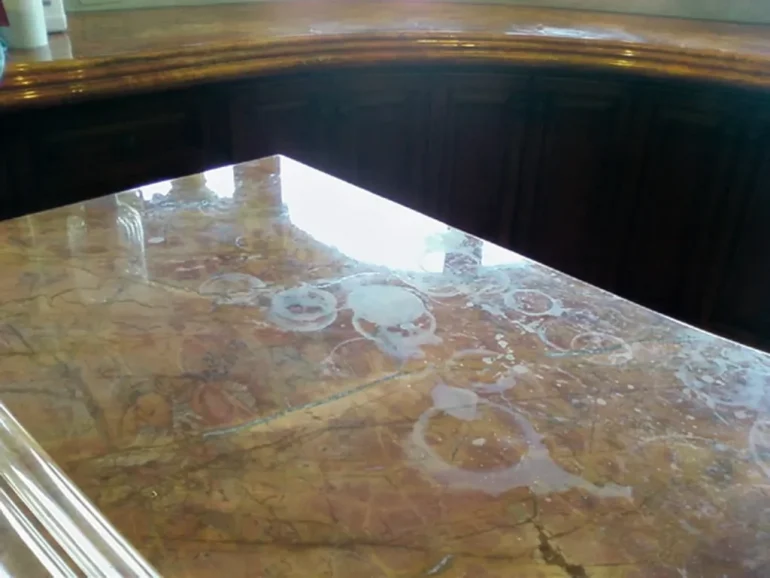
Stains can detract from the beauty of your surface. Identifying the stain type is critical before choosing a treatment method.
Types of Stains and How to Address Them
- Organic Stains (coffee, wine): Use a hydrogen peroxide-based poultice.
- Oil-Based Stains (grease, lotion): Apply a baking soda and water paste to draw out the stain.
- Rust Stains: Specialized rust removers are needed for effective treatment.
Pro Tip: Avoid using harsh chemicals like bleach, as they can cause discoloration or etching.
Repairing Chips: Tools and Techniques
Chipped edges and surfaces can be restored with precision. Follow these steps for a clean repair:
- Clean the Area
Remove dirt and debris from the chip using a damp cloth. - Apply Epoxy Resin
Mix a high-quality epoxy resin and apply it carefully into the chip. Use a spatula or toothpick for small areas. - Allow to Cure
Let the resin set according to the manufacturer’s instructions. Avoid touching it during this period. - Sand and Polish
Use fine-grit sandpaper to smooth the repaired area, then polish for a seamless finish.
Long-Term Care Tips for Natural Stone Surfaces
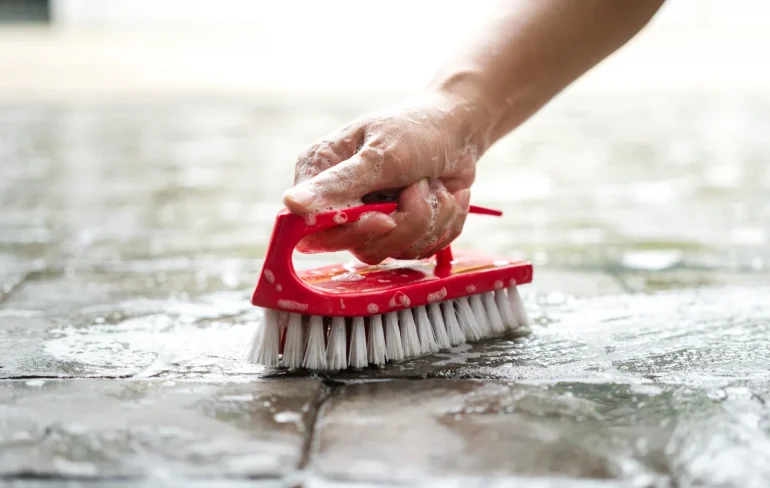
Proper maintenance keeps surfaces looking their best for years. Here are some tips to maintain their beauty:
- Daily Cleaning: Use a pH-neutral cleaner and a soft cloth. Avoid abrasive scrubbers or acidic solutions.
- Immediate Spill Cleanup: Wipe up spills promptly to avoid staining.
- Periodic Resealing: Depending on usage, reseal your surface every 6-12 months.
- Protective Measures: Use coasters and trivets under hot or heavy objects to prevent damage.
The Value of Professional Services
Though DIY solutions are effective for minor issues, professional services offer unparalleled results for more severe damage. Experts utilize advanced tools and techniques, such as diamond honing and color-matched repairs, to restore natural stone surfaces to their original splendor. Investing in professional care can save time, effort, and future costs by ensuring proper restoration and maintenance.
Maintaining the timeless elegance of natural stone is both an art and a science. By following these practical tips and prioritizing regular upkeep, you can enjoy stunning, durable surfaces that enhance your home’s beauty and value.

